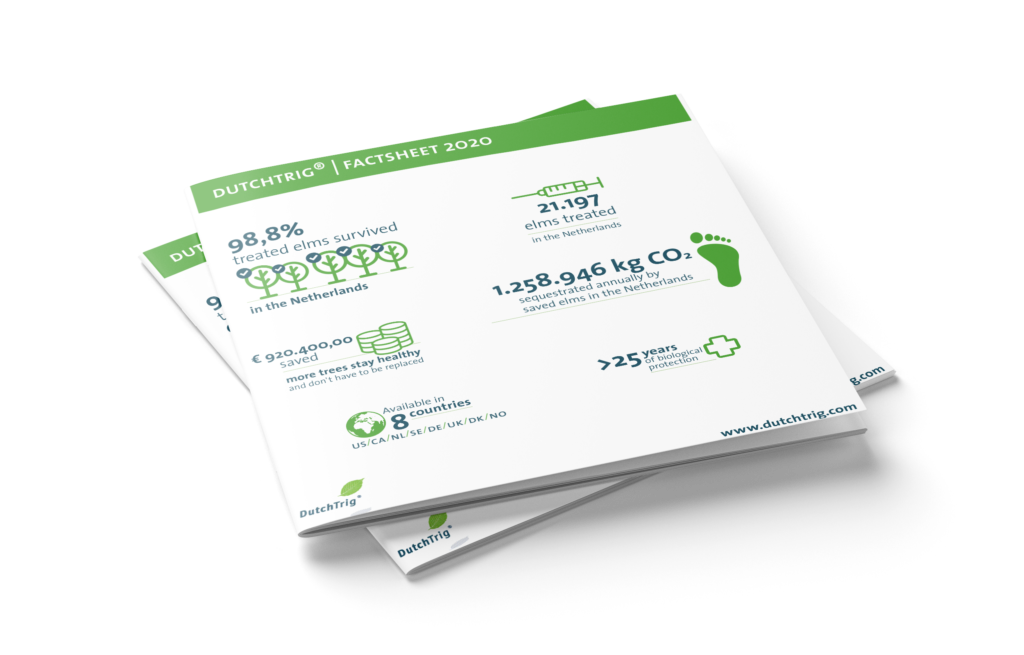For over 25 years, elms in the Netherlands have been injected with DutchTrig by idverde Bomendienst. By using this biological vaccine, as part of an integral elm management program, valuable elms are protected against Dutch elm disease and preserved for our streetscape. Annually we monitor, together with the municipalities, the results of the use of DutchTrig. This way we keep the effectiveness of DutchTrig clearly visible. Also about the injections of 2020 the data are collected and analyzed.
DutchTrig remains effective
The 2020 results show that DutchTrig has once again made an important contribution to maintaining existing and healthy elms. In 2020, 20,197 elms in the Netherlands were injected with DutchTrig. Of these, 98.8% are still healthy. 0.86% of the injected elms succumbed to Dutch elm disease spread by the elm spider beetle. This is an eminently good result because the infection pressure in 2020 started earlier in the season and was more intense than other years. Failure in untreated elms was therefore unfortunately higher than other years.
These results show how valuable the deployment of DutchTrig is. Not only have many elms remained healthy, these injected elms together also provide the annual absorption of 1.258.946 kg CO2, the annual sequestration of over 50.000 kg CO2, an annual capture of over 10.000 m³ of rainwater and an annual capture of almost 5.000 kg particulate matter. By injecting, fewer elms have also fallen out, meaning fewer elms need to be replaced. This ultimately results in a cost savings of about € 920,400. It confirms once again that trees, in this case elms, are not only valuable to our streetscape, but also contribute in several other ways.
International deployment of DutchTrig
DutchTrig is not only used in the Netherlands. Worldwide there are millions of elms that need to be protected against Dutch elm disease. Also in 2020, despite COVID-19, our foreign partners in 7 other countries injected elms with DutchTrig: United States, Canada, Sweden, Germany, United Kingdom, Denmark and Norway. We are very proud that, despite various challenges, the program was able to go ahead and was prioritized by cities such as New York and Oslo.
Curious about the 2020 results?


